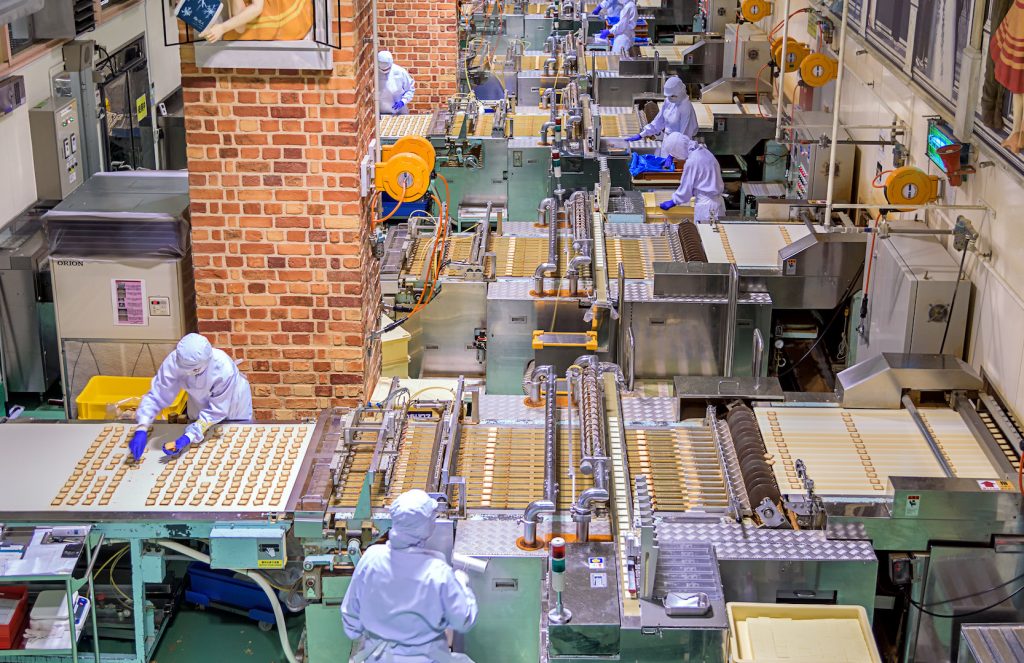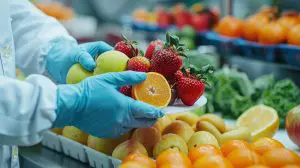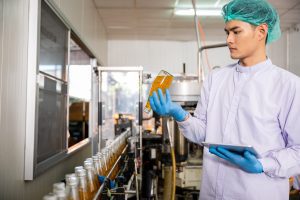Food Industry’s Focus on GMP (21 CFR Part 110*)
*Now updated to 21 CFR 117 Subpart B
If your business is involved in food manufacturing, food safety compliance is now a top priority. Under FSMA (the Food Safety Modernization Act), facilities that manufacture, process, pack or hold FDA-regulated food must follow new federal regulations. At the centre of the food safety requirements are Good Manufacturing Practices (GMPs) and food safety plans, activities that are designed to ensure food is manufactured and handled under sanitary conditions. GMP regulations previously contained in the 21 CFR 110 were updated to the new 21 CFR 117 Subpart B. GMPs are considered the foundations of a food safety system. Therefore, a documented program addressing the below requirements including employee training will give food manufacturers a good base for the development of their food safety plan.
What is required under GMP?
Title 21 Chapter I Part 117 Subpart B – Current Good Manufacturing Practice
- 117.10 – Personnel.
- 117.20 – Plant and grounds.
- 117.35 – Sanitary operations.
- 117.37 – Sanitary facilities and controls.
- 117.40 – Equipment and utensils.
- 117.80 – Processes and controls.
- 117.93 – Warehousing and distribution.
- 117.95 – Holding and distribution of human food by-products for use as animal food.
- 117.110 – Defect action levels.
Overview of Requirements
Personnel
This section focuses on the prevention of communicable diseases that may be transmitted from employees to food, via contaminated utensils/equipment and packaging, or by direct employee handling. Companies must put in place controls for contamination to be prevented. They must also instill and support a culture of food safety within the site. This is achieved through the recruitment of competent personnel and by providing training to employees and their supervisors. Food safety training must be given at onboarding and regularly during the course of employment. This training along with job descriptions must be documented. Employers are required to provide training on personal cleanliness, sanitary practices (hand washing, wearing gloves and uniforms, removing jewelry for example) and on reporting unsanitary conditions that may affect food safety.
Plants and Grounds
The physical premises and outside grounds must be conducive to food safety. Preventing pest entry into the facility, providing good air flow, controlling condensation drips and shatter-proofing lights are some necessary pre-requisites to ensure a suitable and sanitary food producing environment. From a process flow perspective, proper separation between raw and cooked/processed foods is important to control the risk of cross-contamination with pathogens. Similarly, equipment design combined with adequate operating controls can eliminate the risk of allergen cross-contact.
Sanitary Operations (controls may be elevated to Preventive Controls based on risk)
The site must maintain a master sanitation program for food-contact and non-contact surfaces. Examples of surfaces for which cleaning and sanitizing protocols must be developed include gloves, uniforms, equipment, utensils and tools, and food bins/totes/containers.
Depending on risks, allergen and sanitation preventive controls may be implemented under the food safety plan. Sanitation chemicals must be approved for use and stored in a secure storage. Based on the industry sector, a combination of wet and dry cleaning methods may be utilized. It is critical that food-contact surfaces be cleaned and sanitized as often as necessary to ensure they are not a source of contamination. Pests must be excluded or controlled in food storage and processing. Proper ingredient spill cleaning and waste removal practices help with reducing the risk of pest harbourage.
Facilities producing Ready-To-Eat (RTE) products that may support the growth of pathogens are required to develop and maintain an environmental monitoring program to validate the effectiveness of their sanitation programs.
Sanitary Facilities and Controls
Under these requirements, the food processor ensures that water used in production formulation and used for sanitation meets potability standards. The temperature and the pressure of water must permit cleaning and sanitizing. By extension, ice and steam must also be produced under sanitary conditions. Water is tested annually to verify culinary quality. The plant must be equipped with adequate sewage and waste disposal facilities. Employees are provided access to well-stocked and sanitary toilet facilities that do not open directly onto food processing areas. They must also enter the premises via designated entrance points equipped with hand washing facilities. There must be no backflow or cross-connection between the water supply and other plant effluents.
Equipment and utensils
Equipment and utensils must be well maintained and kept clean. Surfaces are approved for use in a food manufacturing facility, are smooth, corrosion-resistant, non-toxic, easy to access and to clean and sanitize. Compressed air and other inert gasses are filtered to prevent the inclusion of contaminants. If the cold chain is maintained, coolers and freezers are equipped with temperature monitoring/recording devices that are calibrated at a regular frequency.
Process and controls (controls may be elevated to Preventive Controls based on risk)
Quality control procedures are employed by qualified personnel who inspect the premises and test materials and finished goods. Ingredients, work-in-progress and rework meet FDA requirements. Product that is found to be adulterated is prevented from entering commerce.
The manufacturing process minimizes microbial growth. Through the application of time and temperature controls, heat treatment, or through acidification or drying, product spoilage is prevented and food safety is assured. If ice is used, it is held in sanitary containers and produced using potable water. Process equipment is cleaned and sanitised by competent and trained personnel. Foreign material detection methods (magnets, sifters, filters, metal detectors, X-ray machines) are used to protect food from physical contamination. Operational practices are designed to prevent the risks of allergen cross-contact and cross-contamination.
Warehouse and Distribution
Product safety is ensured during the loading and unloading of goods. These activities ensure that cross-contamination and allergen cross-contact hazards are prevented. The receiving and shipping of materials takes place under sanitary conditions where food is protected from biological, chemical/radiological and physical hazards.
By-products Sent to Animal Food
Food manufacturers that handle by-products destined for use as animal food must comply with specific GMP requirements. Waste is held under conditions that will prevent contamination: waste containers are approved, safe and identified through labeling. The by-products are held in containers that are kept separate from garbage containers so as to prevent cross-contamination.
Defect Action Levels
Defect Action Levels (DALs) are maximum levels established for natural or unavoidable defects (insect parts, “filth”) in food that present no health hazards. It is the role of quality control staff to ensure that these defects are kept to a minimum. Mixing of food containing defects above the defect action level with another compliant lot is considered adulteration under GMP and is not permitted. For more information on DALs, refer to FDA Defect Level Handbook.





